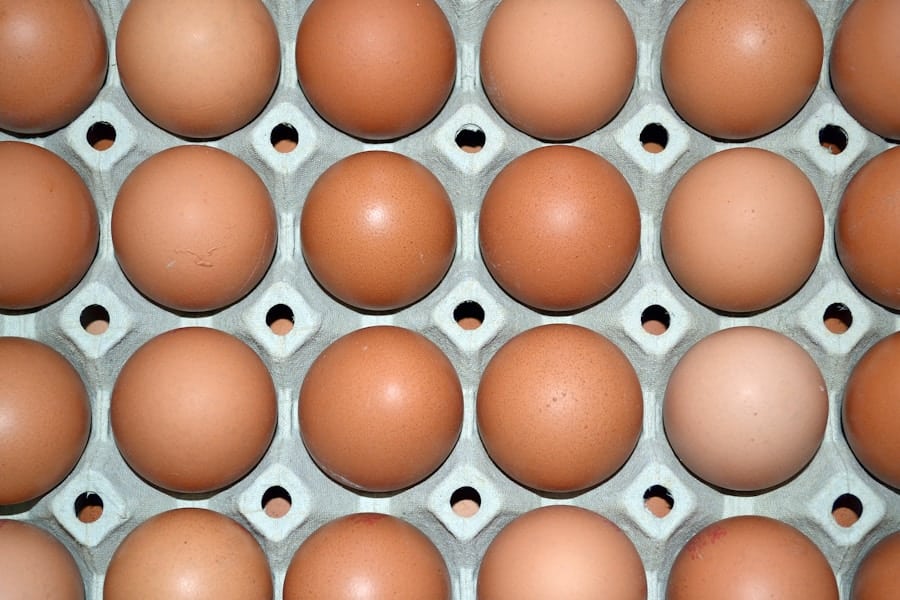Nitrogen is a fundamental element in the world of agriculture and gardening, playing a pivotal role in plant growth and development. As one of the three primary macronutrients—alongside phosphorus and potassium—nitrogen is essential for the synthesis of amino acids, which are the building blocks of proteins. These proteins are crucial for various physiological processes within plants, including growth, reproduction, and overall health.
Without adequate nitrogen, plants exhibit stunted growth, yellowing leaves, and poor yields, making it clear that this nutrient is indispensable for thriving gardens and agricultural systems. Moreover, nitrogen is a key component of chlorophyll, the pigment responsible for photosynthesis. This process allows plants to convert sunlight into energy, which is vital for their survival.
A deficiency in nitrogen can lead to reduced chlorophyll production, resulting in pale or yellow leaves and diminished photosynthetic efficiency. Consequently, understanding the importance of nitrogen in fertilizers is not merely an academic exercise; it has practical implications for anyone looking to cultivate healthy plants, whether in a backyard garden or on a larger agricultural scale. Check out the latest fertilizers for your garden at Soil Compost.
Key Takeaways
- Nitrogen is an essential nutrient for plant growth and is a key component of fertilizer.
- Nitrogen-rich fertilizer promotes healthy leaf and stem growth, as well as overall plant vigor.
- There are different types of nitrogen-rich fertilizers available, including synthetic and organic options.
- Proper application of nitrogen-rich fertilizer involves considering the specific needs of your plants and following recommended guidelines.
- While nitrogen-rich fertilizer can enhance plant growth, overuse can lead to environmental pollution and harm to aquatic ecosystems.
The Benefits of Nitrogen-Rich Fertilizer for Plant Growth
The application of nitrogen-rich fertilizers can significantly enhance plant growth and productivity. One of the most immediate benefits is the acceleration of vegetative growth. Plants that receive adequate nitrogen tend to develop lush foliage and robust stems, which are essential for supporting flowers and fruits.
This vigorous growth is particularly beneficial during the early stages of plant development when establishing a strong foundation is crucial for long-term health and productivity. In addition to promoting growth, nitrogen-rich fertilizers can also improve the overall quality of crops. For instance, leafy vegetables such as lettuce and spinach thrive on nitrogen, resulting in tender, flavorful leaves that are more appealing to consumers.
Similarly, nitrogen plays a vital role in fruit development; crops like tomatoes and peppers often produce larger and more abundant fruits when adequately supplied with nitrogen. This nutrient not only enhances yield but also contributes to the nutritional value of the produce, making it a critical factor for both home gardeners and commercial growers aiming for high-quality harvests.
Different Types of Nitrogen-Rich Fertilizers Available

There are several types of nitrogen-rich fertilizers available on the market, each with its unique characteristics and applications. One of the most common forms is ammonium nitrate, which contains both ammonium (NH4) and nitrate (NO3) forms of nitrogen. This dual availability allows plants to absorb nitrogen quickly, making it an effective choice for rapid growth.
However, due to its high solubility, care must be taken to avoid leaching into groundwater. Another popular option is urea, which is a solid form of nitrogen that can be applied directly to the soil or as part of a liquid fertilizer solution. Urea has a high nitrogen content—typically around 46%—making it one of the most concentrated nitrogen fertilizers available.
When applied to the soil, urea undergoes a transformation into ammonium carbonate through microbial activity, which then becomes available to plants. This process can take some time, so while urea is effective for long-term feeding, it may not provide an immediate boost in nitrogen levels. Calcium nitrate is another noteworthy nitrogen-rich fertilizer that combines calcium with nitrate nitrogen.
This dual benefit not only supplies essential nitrogen but also helps improve soil structure and plant health by providing calcium, which is vital for cell wall development. This type of fertilizer is particularly useful for crops that require both nutrients simultaneously, such as tomatoes and peppers.
How to Properly Apply Nitrogen-Rich Fertilizer to Your Plants
| Plant Type | Optimal Nitrogen Level (ppm) | Frequency of Application |
|---|---|---|
| Tomatoes | 200-250 | Every 3-4 weeks during growing season |
| Lettuce | 150-200 | Every 2-3 weeks during growing season |
| Corn | 200-250 | At planting and then again at 6-8 inches tall |
| Roses | 150-200 | Every 4-6 weeks during growing season |
Applying nitrogen-rich fertilizer requires careful consideration to maximize its benefits while minimizing potential drawbacks. Timing is crucial; applying fertilizer at the right stage of plant growth can significantly influence its effectiveness. For instance, during the early stages of growth when plants are establishing their root systems, a slow-release nitrogen fertilizer may be ideal.
This allows for a steady supply of nutrients over time without overwhelming young plants. The method of application also plays a vital role in ensuring that plants receive the necessary nutrients. Broadcasting—spreading fertilizer evenly across the soil surface—is a common technique but may lead to uneven distribution if not done carefully.
Alternatively, side-dressing involves applying fertilizer in bands alongside growing plants, which can enhance nutrient uptake by placing the fertilizer closer to the root zone. Additionally, incorporating fertilizers into the soil before planting can help ensure that nutrients are readily available as seedlings emerge. Watering after application is another important step; it helps dissolve the fertilizer and facilitates its movement into the root zone where it can be absorbed by plants.
However, excessive watering can lead to nutrient leaching, particularly with highly soluble fertilizers like ammonium nitrate or urea. Therefore, it’s essential to strike a balance between providing adequate moisture and preventing runoff.
Potential Risks and Drawbacks of Using Nitrogen-Rich Fertilizer
While nitrogen-rich fertilizers offer numerous benefits for plant growth, they also come with potential risks and drawbacks that gardeners must consider. One significant concern is the risk of over-fertilization, which can lead to nutrient imbalances in the soil and negatively impact plant health. Excessive nitrogen can cause rapid vegetative growth at the expense of flowering and fruiting, resulting in lush foliage but poor yields.
This phenomenon is often referred to as “luxuriant growth,” where plants become overly dependent on nitrogen inputs. Another critical issue associated with nitrogen-rich fertilizers is their environmental impact.
Eutrophication occurs when excess nutrients stimulate algal blooms in aquatic ecosystems, depleting oxygen levels and harming aquatic life. This not only disrupts local ecosystems but can also pose health risks to humans who rely on contaminated water sources. Additionally, the production and transportation of synthetic nitrogen fertilizers contribute to greenhouse gas emissions.
The Haber-Bosch process used to synthesize ammonia from atmospheric nitrogen requires significant energy input, often derived from fossil fuels. As concerns about climate change grow, the sustainability of relying heavily on synthetic fertilizers comes into question.
Tips for Choosing the Best Nitrogen-Rich Fertilizer for Your Garden

Selecting the right nitrogen-rich fertilizer for your garden involves several considerations that can influence plant health and productivity. First and foremost, understanding your soil’s nutrient profile is essential. Conducting a soil test can provide valuable insights into existing nutrient levels and pH balance, allowing you to choose a fertilizer that complements your soil’s needs rather than exacerbating imbalances.
When choosing a nitrogen-rich fertilizer, consider its form—whether granular or liquid—and its release rate. Granular fertilizers often provide a slow-release option that feeds plants over an extended period, reducing the risk of leaching and promoting steady growth. On the other hand, liquid fertilizers can deliver an immediate boost in nutrients but may require more frequent applications.
It’s also important to consider the specific needs of your plants. Different crops have varying nitrogen requirements; leafy greens typically thrive on higher nitrogen levels compared to root vegetables or flowering plants. Therefore, selecting a fertilizer tailored to your specific crops can enhance overall garden performance.
Lastly, consider organic options such as composted manure or fish emulsion as alternatives to synthetic fertilizers. These organic sources not only provide nitrogen but also improve soil structure and microbial activity over time, contributing to long-term soil health.
The Environmental Impact of Nitrogen-Rich Fertilizer Use
The environmental implications of using nitrogen-rich fertilizers are multifaceted and warrant careful consideration by gardeners and farmers alike. One major concern is nutrient runoff into waterways, which can lead to significant ecological consequences such as algal blooms and dead zones in aquatic environments. These blooms consume oxygen in water bodies, creating hypoxic conditions that are detrimental to fish and other aquatic organisms.
Moreover, excessive use of nitrogen fertilizers contributes to greenhouse gas emissions through nitrous oxide (N2O) release—a potent greenhouse gas with a global warming potential significantly higher than carbon dioxide (CO2). The microbial processes involved in converting excess nitrogen into nitrous oxide occur primarily in poorly managed soils or under conditions where nitrogen levels exceed plant uptake capacity. In addition to these direct environmental impacts, reliance on synthetic nitrogen fertilizers can lead to soil degradation over time.
Continuous application without adequate organic matter inputs can diminish soil fertility and structure, making it increasingly difficult for plants to access nutrients naturally present in healthy soils.
Alternatives to Nitrogen-Rich Fertilizer for Sustainable Gardening
For those seeking sustainable gardening practices that minimize reliance on synthetic nitrogen-rich fertilizers, several alternatives exist that can effectively nourish plants while promoting environmental health. One such alternative is the use of cover crops—plants grown primarily for soil improvement rather than harvest. Leguminous cover crops like clover or vetch have the unique ability to fix atmospheric nitrogen through symbiotic relationships with rhizobia bacteria in their root nodules.
When these cover crops are tilled back into the soil after their growing season, they enrich the soil with organic matter and available nitrogen. Composting is another excellent method for enhancing soil fertility sustainably. By recycling kitchen scraps and yard waste into nutrient-rich compost, gardeners can create a natural source of nitrogen along with other essential nutrients.
Compost not only provides slow-release nutrients but also improves soil structure and moisture retention. Additionally, utilizing organic fertilizers such as blood meal or fish emulsion can offer a more environmentally friendly approach to supplying nitrogen without the risks associated with synthetic options. These organic sources release nutrients more gradually than their synthetic counterparts while also contributing beneficial microorganisms to the soil ecosystem.
Incorporating these sustainable practices into gardening routines not only supports plant health but also fosters a more resilient ecosystem capable of thriving without excessive dependence on chemical inputs. By embracing alternatives to traditional nitrogen-rich fertilizers, gardeners can cultivate vibrant landscapes while safeguarding environmental integrity for future generations.
If you are interested in learning more about fertilizers and their impact on plant growth, you may want to check out this article on growing disease-resistant tomatoes for your garden. This article discusses the importance of using the right fertilizers to promote healthy plant growth and prevent diseases in your garden.
FAQs
What is nitrogen fertilizer?
Nitrogen fertilizer is a type of fertilizer that contains a high concentration of nitrogen, which is an essential nutrient for plant growth and development.
What are the benefits of using nitrogen fertilizer?
Nitrogen fertilizer helps promote healthy leaf and stem growth, improves the overall quality of the plant, and enhances the plant’s ability to produce higher yields.
What types of fertilizers are highest in nitrogen?
Ammonium nitrate, urea, and ammonium sulfate are some of the fertilizers that are highest in nitrogen content. These fertilizers typically contain nitrogen in the form of ammonium or urea.
How does nitrogen fertilizer affect plant growth?
Nitrogen fertilizer provides plants with the necessary nutrients to support their growth and development. It helps in the production of chlorophyll, which is essential for photosynthesis, and promotes overall plant vigor.
What are the considerations when using nitrogen fertilizer?
It is important to carefully follow the recommended application rates for nitrogen fertilizer to avoid over-fertilization, which can lead to environmental pollution and harm to plants. Additionally, it is important to consider the specific needs of the plants being fertilized and the soil conditions.

